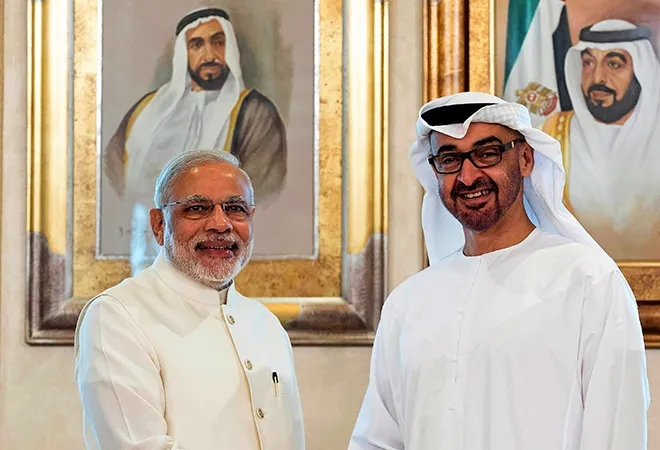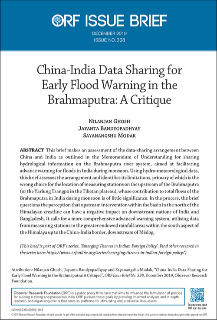The year 2020 has been a watershed moment for relations between India and China following the most serious clashes between the two countries in the Galwan region of Ladakh since the 1962 war; relations between New Delhi and Beijing are at new lows. These events have had a cascading effect on the very thought process of foreign policy, not just for New Delhi with regard to its neighbourhood but also Beijing’s understanding of its own threat perceptions as well.
What dictates alignment now
Strategic autonomy is today a term New Delhi’s power corridors are well-acquainted with. According to a former Foreign Secretary of India, Vijay Gokhale, the ideation of ‘strategic autonomy’ is much different from the Nehruvian era thinking of ‘non-alignment’. Speaking in January 2019, Mr. Gokhale said: “The alignment is issue based, and not ideological.”
For Beijing and New Delhi, one region where both contesting neighbours have employed similar versions of ‘non-alignment’ thinking is in West Asia, and the ethos of equitable engagement with the three poles of power in Saudi Arabia, Iran and Israel, without stepping into the entanglements of the region’s multi-layered conflicts and political fissures. Such were the commonalities in thinking that at one point in time, suggestions were made to construct an ‘importers OPEC’ in order to put forward the interests of major oil importers, mostly developing Asian economies, against the producers’ cartel. However, the year 2020 and the tectonic geopolitical shifts it has brought in its wake, from deteriorating U.S.-China ties, to the COVID-19 pandemic that started in China, followed by the Ladakh crisis, is forcing a drastic change in the geopolitical playbooks of the two Asian giants, and, by association, global security architectures as well.
Pre-dating 2020, India’s outreach to West Asia sharpened since 2014 with the coming of the Narendra Modi government. As the powerful and oil-rich Gulf states looked for investment alternatives away from the West to deepen their own strategic depth, persuaded by Mr. Modi’s centralised decision-making style, India doubled down on its relations with the likes of Abu Dhabi and Riyadh, giving open economic and political preference to the larger Gulf region. While engagements with Israel moved steadily forward, Iran lagged behind, bogged down by U.S. sanctions, which in turn significantly slowed the pace of India-Iran engagements.
Advantage Beijing
Meanwhile, China’s overtures have been steadily more adventurous as it realises two major shifts that have taken place in West Asia. First, Beijing has tried to capitalise around the thinking in the Gulf that the American security safety net is not absolute, and they need to invest more in others. China, being second only to the U.S. in both economic and military terms today, is the obvious engagement. The fact that the United Arab Emirates (UAE) obtained Chinese Wing Loong drones in 2016 — a copy of U.S.’s infamous armed MQ-9 ‘Reaper’ drone that Washington refused to sell — offers a good example of the Gulf’s resolve of attaining military capabilities from wherever possible. Second, the Gulf economies such as Saudi Arabia, even though attempting a hard shift away from their addiction to the petro dollar, will still need growing markets to sell oil to in the coming decade as they reform their economic systems. The obvious two markets here are China and India.
Sharp contrasts
However, Beijing’s recent plays in the region have not been subtle. A report in September shone light on a $400 billion, 25-year understanding between Iran and China, with Beijing taking advantage of U.S. President Donald Trump’s abandonment of the Iran nuclear deal. Scholars such as Scott J. Harr have pontificated that China is no longer happy with a passive role in West Asia, and through concepts such as “negative peace” and “peace through development”, in concert with tools such as the Belt and Road Initiative, Beijing is now ready to offer an alternative model for “investment and influence”. Over the past month, Chinese Foreign Minister Wang Yi during an in-person meet with Iranian Foreign Minister Mohammad Javad Zarif suggested the development of a “new forum” to address the region’s tensions — an alternative to the West-led ecosystems that have prevailed for decades. It remains to be seen, however, how China balances itself between the poles of power while backing one so aggressively.
From India’s perspective, as it maintains its trapeze-wire balancing act of diplomacy in West Asia, the overt outreach to the Gulf and the ensuing announcements of multi-billion-dollar investments on Indian shores by entities from Saudi Arabia and the UAE is only New Delhi recognising the economic realities of the region. Despite entanglements in the Yemen war and general tensions between the Gulf states and Iran, the likes of Saudi Arabia, the UAE and so on have maintained relatively strong and stable economic progression. Israel’s recent peace accords with the UAE and Bahrain add much further weight towards a more stable Gulf region — the caveats withstanding that the operationalisation of the accords is smooth and long-lasting.
The theory of interests superseding ideology in foreign policy is fast unravelling practically, both from the perspectives of India and China. While in the recent past, the Indo-Pacific, with the development of the Quad, has taken centre stage, other geographies such as West Asia have also started to showcase bolder examples of New Delhi and Beijing’s metamorphosing approaches towards the international arena.
This commentary originally appeared in The Hindu.
The views expressed above belong to the author(s). ORF research and analyses now available on Telegram! Click here to access our curated content — blogs, longforms and interviews.




 PREV
PREV


